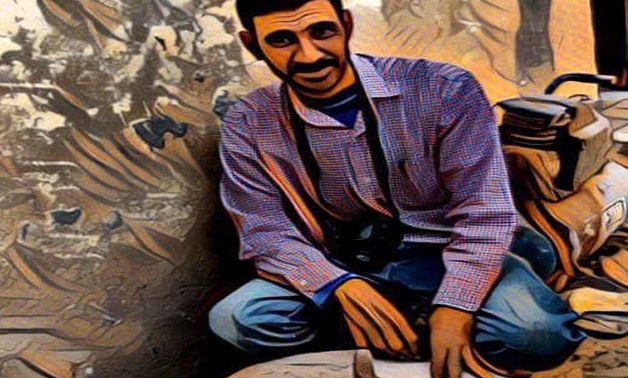
Usama Ghazali, founder of Yadaweya
CAIRO - 21 August 2017: Remote and obscure, villages in Egypt's oases have formed their own art through hundreds, and even thousands of years. Today, an initiative by an Egyptian ranger is spreading this art at a global level.
Yadaweya is founded by Usama Ghazali , Senior ranger at Wadi Elgemal nature protectorate in Marsa Alam, located on the western coast of the Red Sea.
Yadaweya is an online marketplace that aims to connect local Egyptian artisans with the global market worldwide. Yadaweya started with a team of young Egyptian entrepreneurs who were passionate about the diverse handicrafts and handmade hidden treasures of Egypt which represents the art and history of Egypt.
Egypt is full of arts and handicrafts made by locals, especially in the south and the hidden oasis, so the Yadaweya platform is helping to expose those arts globally.
Pottey Art ( Ballas)
“Nile silt clay produces red pottery, while desert marl clay results in white colored pottery. Egyptians have known how to work with this rock-like clay since pre-dynastic times, about 4,000 B.C., particularly in the area near the modern city of Qena which called el dier or Ballas village,” Yadaweya’s website states.
Pottery art is one of Egypt’s landmarks, beside being an amazing piece of art in your house, it can be used to filter water and gives it a refreshing smell.
 Pottery art by Yadaweya
Pottery art by Yadaweya
 Pottery art in the past by Yadaweya
Qena’s handmade carpets( Kilim)
Pottery art in the past by Yadaweya
Qena’s handmade carpets( Kilim)
“Am Mujahid, an 80-year-old artisan, is still working with his hands on the loom to produce pieces of art from kilim, carpets and shawls. Despite the simplicity of design and colors, what is made by Am Mujahid is a piece of wool art protects from cold winters. Am Mujahid is the last artisan working on Burda textile, where he makes a collection of shawls, which is called locally "shamla", as well as some pieces of hand-made kilim from sheep wool,” Yadaweya’s website says.
 Am Mujahid, Kilim maker by Yadaweya
Bashandy Oasis Kilim handmade carpets( Kilim)
Am Mujahid, Kilim maker by Yadaweya
Bashandy Oasis Kilim handmade carpets( Kilim)
“In Bashandy Village in Dakhla Oasis, there is no illiteracy and there is no unemployment. What gave that village its name was a famous Indian sheikh, who lived among the people, and called himself Pasha Hindi. His strong faith in Islam spurred people to name the village after him, and it eventually became Bashandy. The idea began more than 30 years ago, when locals proposed the establishment of a charity association in 1977.
Each citizen would have to pay 5 piasters a month, until the amount reached 120 pounds, but now it has reached 7 million pounds. The association is called the association of development. The most important project in the village is the establishment of the unique klim and carpets project. The raw wool is purchased from producers. Finally, it is manufactured in the form of carpets, kilims and blankets.” Yadaweya said.
 Bashandi Oasis by Yadaweya
Dates seeds curtains
Bashandi Oasis by Yadaweya
Dates seeds curtains
People in oases do not throw anything from the palm tree away. They value every little thing from the palm tree large or small and make many products. The date seeds (Nawah El-balah) are used to make the best curtains in Kharga aasis, where there are complete groups working in this art.
For further information please visit: http://www.yadaweya.com
 Curtains made of dates seeds - Usama Ghazali
Curtains made of dates seeds - Usama Ghazali
 dates seeds - Usama Ghazali
dates seeds - Usama Ghazali






Comments
Leave a Comment